Photo
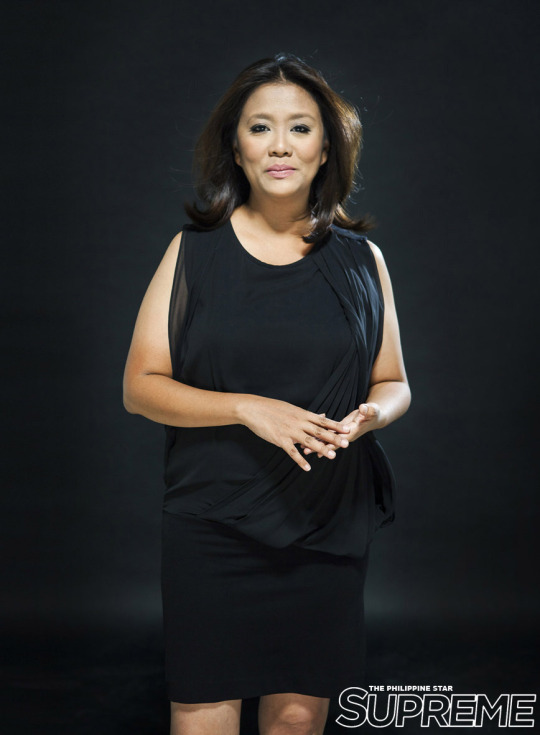
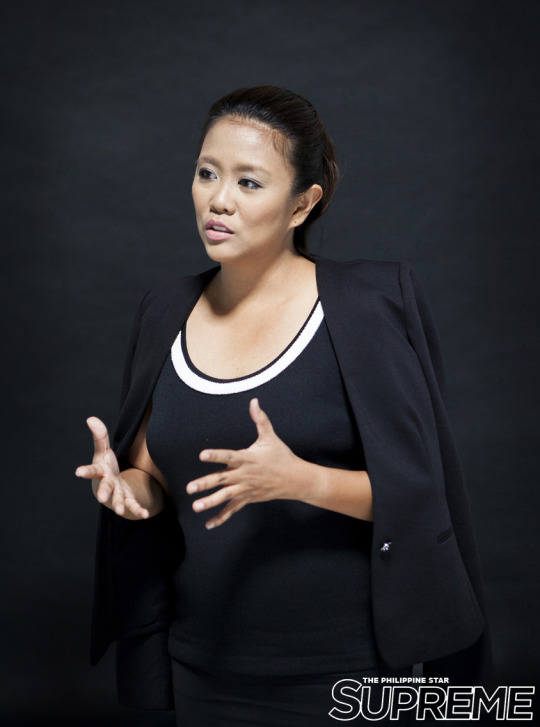

Cover story: Nancy Binay talks dirty politics
Click here to read Supreme's exclusive, no-holds-barred interview with Nancy Binay. We ask her about her looks, the campaign, and corruption allegations, and she admits to us: "I won because of my last name."
Words by PEPE DIOKNO
Photo by STEVE TIRONA
Produced by DAVID MILAN
Makeup by JANINA DIZON
Hair by DONALD LAPEZ
12 notes
·
View notes
Photo
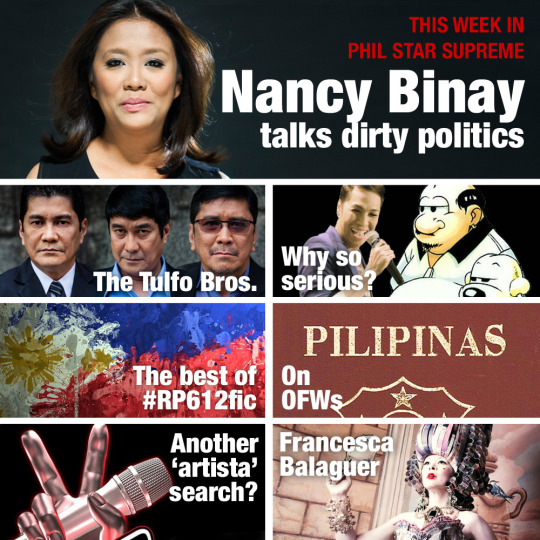
Its a packed issue for you all! Here are the stories in today's SUPREME. Grab your copy of The Philippine STAR now!
2 notes
·
View notes
Photo

Ryzza Mae "Cha Cha" Dizon: Top of the class
Before you joined pageants, you were being teased because of your looks. If you were to face those who taunted you before, what would you say to them?
Wala naman po, mag papasalamat lang po ako kasi dahil sa kanila mas lumakas po ang loob ko at kaibigan ko naman po sila, ganun naman po talaga mga bata, diba laging may tuksuhan?
When you won the Little Miss Philippines title, what was your beauty queen moment?
Nung tinawag po ako ni Bossing, hindi po ako makapaniwala na ako yung nanalo, natulala po ako ng ilang segundo, halos akala ko po panaginip lang po lahat ng mga nangyayari, masaya po ako kasi matutulungan ko na po yung mga magulang ko kasi yung tatay ko po walang trabaho, yung mama ko po umaasa lang dati sa maliit na tindahan.
With your sitcom and Eat Bulaga every day, don’t you get exhausted? What is your favorite thing about working on Eat Bulaga?
Hindi naman po ako napapagod, gusto ko po talaga kasi mag artista, sa Eat Bulaga po gusto ko din po kasi ang tagal-tagal na po ng Eat Bulaga, syempre po ngayon kasali na ako. Hindi ako makapaniwala! Sabi nga po ni Mommy dati pinapanuod niya lang po yun eh ngayon po kasali na daw po ako. Masaya po ako kasama lahat ng dabarkads, ang babait po at love ako nila lahat, parang lahat po sila nanay, tatay, tito at tita ko.
Read more
Words by SHINJI MANLANGIT
Photo by NIKO VILLEGAS
Produced by DAVID MILAN
26 notes
·
View notes
Photo
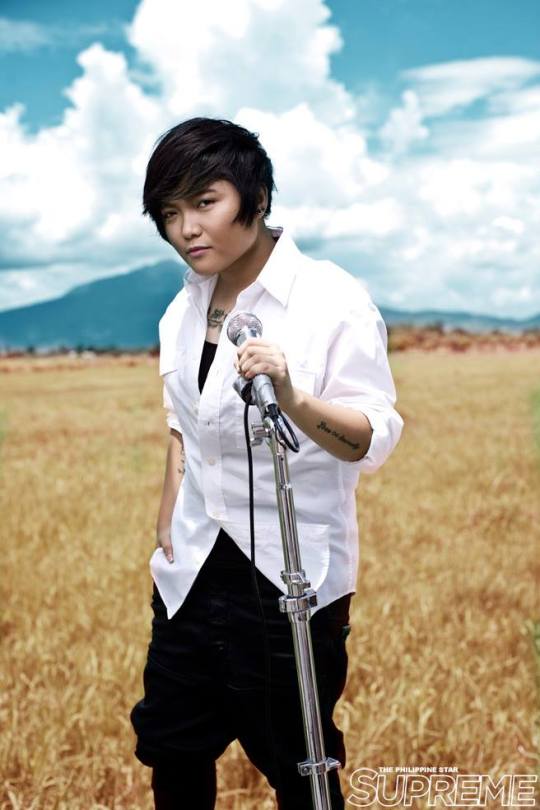
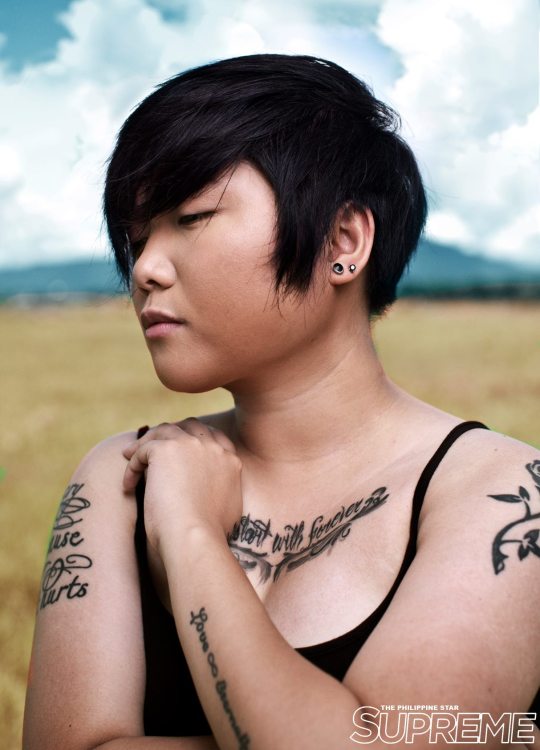

The new Charice
In her first photoshoot since coming out of the closet, Charice talks to Supreme about love, equality, and her future.
One of the things you said in your recent interview with Boy Abunda was to ‘always be true to yourself’. What has that meant for you?
I don't regret how I used to dress and fix my hair. I always think that the past was a challenge I needed to go through. And I'm not pushing anyone to come out of the closet. I didn't do what I did in order to say, "Hey, follow me." I hope what I did serves as an inspiration, but I understand if they don't want to follow in my footsteps. I understand. It's part of the situation. You don’t want to hide forever, but you will feel when it's the right time.
Were there any people in your life who inspired you, in turn, to come out?
Lots, but what really pushed me was me thinking to myself, “Okay, gagawin ko na.” See, before I came out on TV, I'd go to the mall looking like I do. Alyssa and I would go out. What pushed me was I saw that people didn't react. It was normal to them. When they'd see me, they'd see me as Charice. Of course, I heard other things, you can't avoid that. But most of the people just went, “Si Charice, o.” Wala nang karugtong.
What's most important to me is the reaction of Filipinos. Ever since I started showbiz here in the Philippines, there were a lot of naysayers. Sadly, most of them were Filipinos. What I did here, parang buwis-buhay naman talaga kasi either Filipinos love you or they don't accept you. So it's a big achievement for me that now, Filipinos are telling me, “we respect you.”
What do you hope for in the future for yourself and other people?
I hope someday, sexual preference will no longer be a big deal. Like, when you see people, you won't need to ask them. You won't need a confirmation, you know? Whatever you see is what it is, and people are equal, basically. That's what I want for everyone. I know this will happen. The time will come.
Are you working on anything new?
I still have one month here in the Philippines and I’m thinking of working on a third album because I've only released two albums in the Philippines, and it's been a while. So gusto ko mag-release ng isa pang album dito para naman bago ako umalis, may maiwan man lang ako sa fans ko dito. I’m very excited kasi kakausap na ako ng mga ilang producers and everything.
Yung idea is gusto kong ilagay yung lahat ng mga favorite songs ko na gusto kong i-share at gawan ng sarili kong version. And then, I’ll go back to LA. We’re recording something, so it’s going to be a busy year.
How do you want to be remembered?
I just want to be remembered as Charice, the singer. Nasabi ko na yung dapat kong sabihin about me and other things, so let’s just move on and focus on what I share with people, which is my music and my voice. So, sana, yun nalang.
Read more
Words by CARINA SANTOS
Photo by CHOLO DELA VEGA
Produced by DAVID MILAN
Makeup by JANINA DIZON
Grooming by DONALD LAPEZ
59 notes
·
View notes
Photo




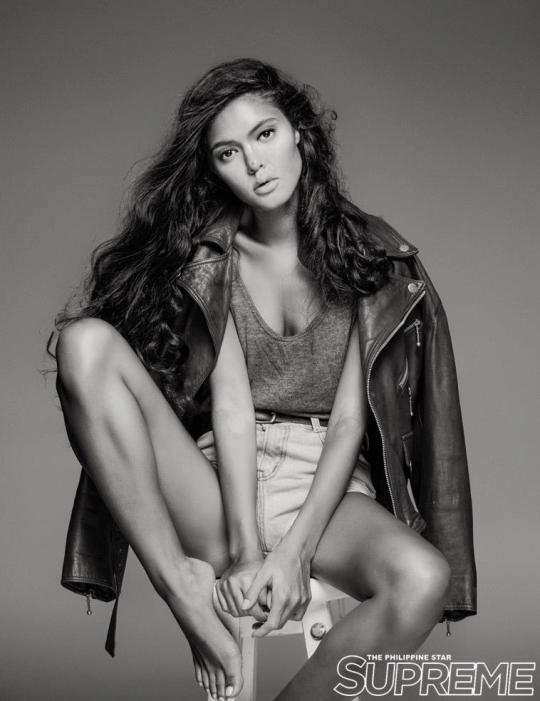
Meet Tini Dahl: Supreme's next face to watch out for
It’s the awkward girls in high school who take the real stages later on in life.
Half-Filipino and half-Norwegian model Tini Dahl describes herself as a dangly kid in her mid-teens, with limbs too long for her body; a tomboy who couldn’t fix her hair to save her life. She also had the stereotypical dorky health issues, like asthma and allergies. It was her older sister, Lala, who seemed to be born wearing stilettos. Lala eventually eased Tini into the world of all things feminine.
Tini’s life has been as exotic as her looks. Studying in an international school in Sweden and meeting students from all around the world made her realize that she wanted to travel constantly. Since then, she hasn’t spent more than nine months in one country. She studied in England, took a year off to backpack around Southeast Asia, worked as a waiter in Oslo, and moved to Spain on a whim at the age of 19, where she met her boyfriend. An International Relations and Development Studies major, Tini came to the Philippines through a grant that enabled her to do her thesis abroad. “I fell in love with the place and couldn’t book a ticket fast enough to come back,” she says. She returned four months ago to work as an IT analyst for a Norwegian oil company.
Despite her strong features, modeling was completely unplanned. Tini merely took a little fashion risk and showed up at a club in what she describes as “really eye-catching striped pants” and caught the attention of Look’s Carmencita Sioson, who asked her to do a small style feature depicting a girl in her 20s. Her unforeseen career has snowballed since then. A week later, she was booked for a Preview editorial. She also did the AVP for Jerome Ang’s Fashion Week 2013 showcase.
Read more
Words by CATE DE LEON
Photos by BJ PASCUAL
Styled by MIGUEL URBINA TAN
4 notes
·
View notes
Video
youtube
Q&A with Elmo Magalona
How do you think your dad would’ve felt if he were here right now?
Before, I used to say, “I hope Dad’s happy with what I’m doing now,” or “I hope he’s proud of what we’re doing now.” But now, I’m really 100-percent sure that my siblings and I are making him really happy wherever he may be right now. Also, thanks to technology, Oishi, and the people that help us out; nakikita at nae-express namin ‘yun ngayon.
How do you think the Magalona family makes your dad’s memory proud?
Hindi kami mapaghihiwalay sa isa’t isa, eh. Everyone is important. All of us have key roles — kumbaga meron akong strict ate, cool ate, at kuya na second idol ko, next to my dad, and I have younger siblings who keep me entertained at times. And of course, our mom who’s been there since day one. Sometimes, di ako makasama sa friends ko. Pero sumasama ako sa pamilya ko at complete kami, okay na ako ron.
How do you see this growing in the future?
Everything is getting better, especially with our family. Because of these things, we connect more with each other. It makes us stronger as a family. We really try our best to continue the legacy and honor both our parents.
Read more
Words by DLS PINEDA
51 notes
·
View notes
Photo

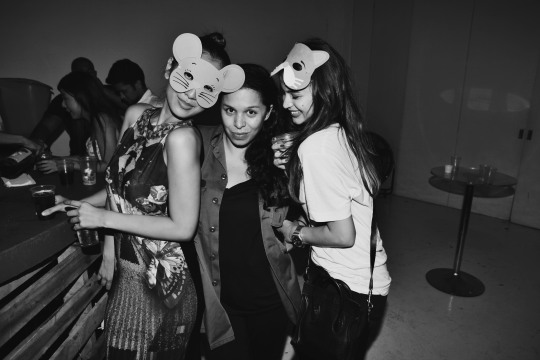
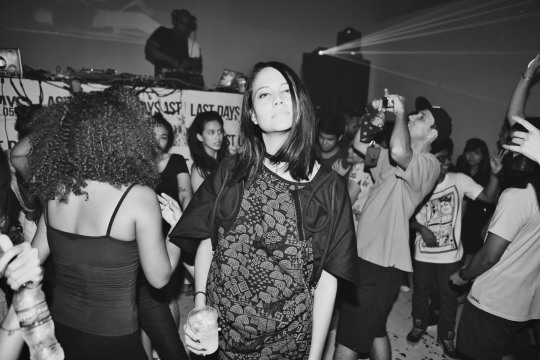

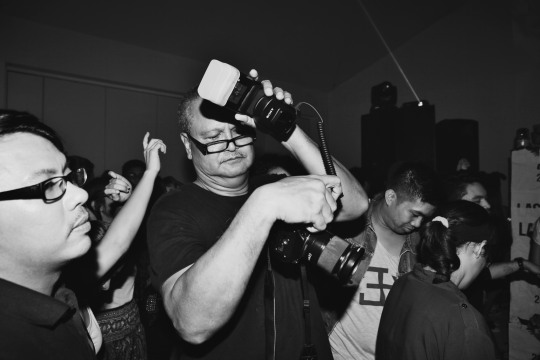

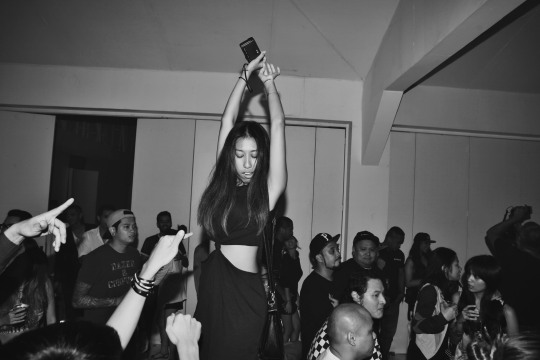


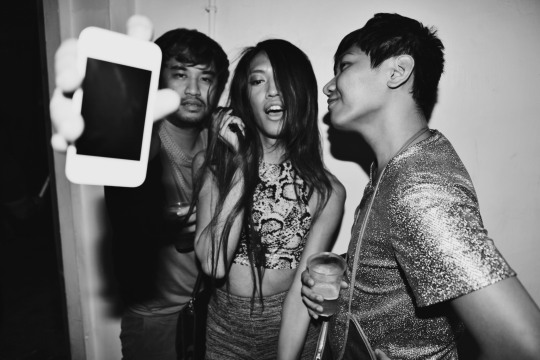
Lust, daze, Manila
The word "party" is so interesting to me. People go to clubs expecting a party. But the difference between going to a party and going to a club only becomes apparent when you arrive at one expecting the other.
As a portrait photographer, I don't photograph parties, but do I photograph people at parties sometimes. Those times only happen when a certain type of party comes along — the type I hear about through friends of friends; the type which happens off the dress-coded, guestlisted party grid I usually avoid.
Welcome to Last Days Manila.
Text and photos by JOSEPH PASCUAL
#events#people#joseph pascual#raymond gutierrez#anne curtis#liz uy#tokwa penaflorida#martin bautista#nix damn p
14 notes
·
View notes
Text
A tribute to cinema legend Eddie Romero (1924-2013)
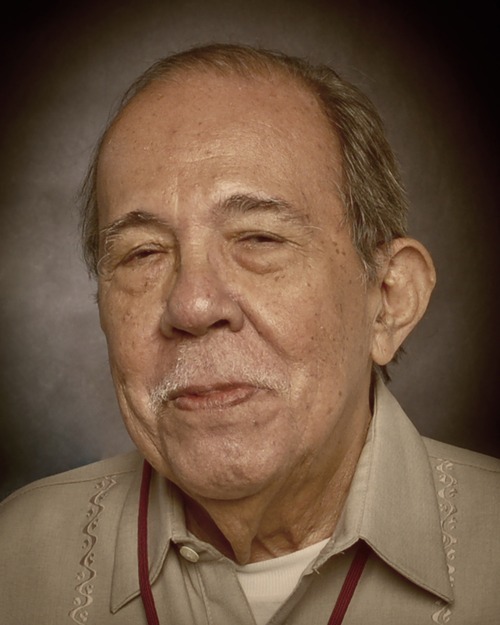
By FRANCIS JOSEPH H. CRUZ
He was the oldest in the crowd. Seated among an ambitious batch of wide-eyed graduates of a Mowelfund course was Eddie Romero, the venerated veteran filmmaker of such works as Aguila and Ganito Kami Noon, Paano Kayo Ngayon? He was there as a guest of honor, a beacon of what is to come for the filmmakers who are about to test the skills they have mustered from several months of sitting through lectures and practical demonstrations. When he was acknowledged by the master of ceremony, he stood up with a certain air of dignity one expects from someone who has lived a full and productive life. Predictably, his mere presence drew a round of applause from the crowd.
Eddie Romero would still continue to grace film events, garnering the same acknowledgment from his peers and the public by virtue of the title that was bestowed on him by the Philippine government. In a film industry where dreamers are turned into auteurs by virtue of a novel story treatment, a powerful pitch, and a sizable film grant, Romero’s presence felt reassuring. He represented not only an era where Filipino films were golden and weren’t begging for viewership, but an artistry that was a product of time and hard work, with a little sprinkling of good old luck. One can only wish that the filmmakers who gave their automatic applause upon the mere mention of his name acknowledged not only the grandeur of several of his works but also his admirable story.
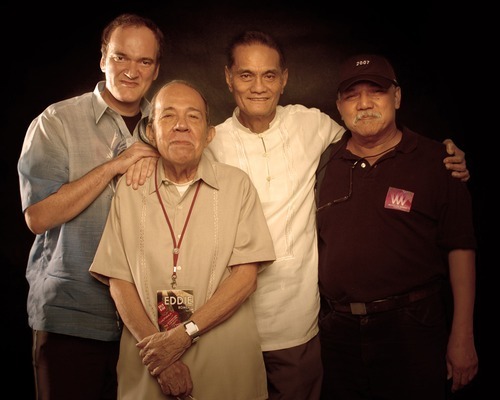
Quentin Tarantino and Eddie Romero with Cirio H. Santiago and Tikoy Aguiluz.
LITERARY ROOTS
After the war, Romero would return to his literary roots, serving as managing editor for a magazine. De Leon would again convince Romero to return to film. He would again write scripts for De Leon, then start helping in directing various scenes, before directing his first feature, a forgotten film called Ang Kamay ng Diyos. The rest, as they say, is history. Romero’s career as a director is marked with achievements. In 1951, he won the directorial prize of the very first Maria Clara Awards, the country’s first formal film awards-giving body. He would later on win more gold-plated trophies and medals, the pinnacle of which is the National Artist Award in 2003.
Romero would be most remembered in the Philippines for his more elegant works. Ganito Kami Noon, Paano Kayo Ngayon?, a period satire that had a very young Christopher de Leon play a simpleton in search of national identity, has turned a religious experience for some since it mostly screens during the Lenten holidays when mindless entertainment seemed too sinful. Aguila has taken its place as one of the late Fernando Poe Jr.’s most impressive films.
GENRE WORK
Interestingly, like his mentor De Leon, Romero is most remembered overseas for his genre works. Fortunately, even in that portion of his filmography that would have caused the most revered of filmmakers some sort of embarrassment, are quiet gems that reveal artistry amid the primary need for pleasure and entertainment. For example, The Ravagers, a cheaply-made war flick, had Fernando Poe Jr., playing sidekick to John Saxon, outshine his lead in terms of bravura and romance. In an age of American thirsting for stories about their heroes’ bravery, here comes a film where a Filipino performs the more difficult stunts to win the heart of the Caucasian bombshell, leaving the American soldier content with just saving the day.
The story of Romero’s career is one that is unheard of today. He was patient. He took time to blossom, to earn his laurels. This dedication to the craft, which took him several years and a World War to develop, gifted him with an enduring career. He started scripting films before the war and released his last film, Teach Me to Love, in 2008. His career lasted several decades, spanning all of the so-called golden ages of Philippine Cinema. He has seen it all. He has seen the triumphant premieres of Gerardo de Leon’s films. He has seen those films rot away to oblivion. He has seen Lino Brocka making waves for adventurous films in international film festivals. He has also seen the same Brocka direct popular melodramas for cash-hungry capitalists. He has seen Lav Diaz and Brillante Mendoza get critics’ approvals everywhere. He has also seen the empty local cinemas that screen those admired works.
Romero has indeed a long life. Through the films he has left behind and the dreamers he has inspired, he will continue to live longer. Rest in peace, Mr. Romero.
26 notes
·
View notes
Text
Pinoy art shines at Art Basel HK

By JAM ACUZAR
The superpowers of the art world flew from New York, London, Beijing, and many other cities to attend the first edition of Art Basel Hong Kong last week, which opened on May 23 and ended May 26, at the HK Convention and Exhibition Centre.
Art fairs are a market place for art. It is a meeting place for galleries, collectors, art dealers, and curators to buy and sell art. Besides monetary exchange, however, art fairs provide a venue for social and intellectual exchange as well. Forums and talks were available for people to sit and listen to the most renowned members of the art world discuss and debate on art criticism, building new museums, and others. The Philippines’ very own Marcel Crespo, for example, gave a talk together with other major collectors entitled “Collector’s Focus, The Asia-Pacific Region.”
Besides being part of the Basel “brand,” the event marks Asia as being a top player in the global art circuit. Some 67,000 visitors attended the fair, with major VIPs flying in, including big names such as Russian oligarch Roman Abramovich and partner Dasha Zhukova, Wendi Murdoch, American art dealer and curator Jeffrey Deitch, and even Kate Moss, proving the Asian art market to be just as important as that of the Western world’s.
Two hundred sixty-six galleries participated, including four of the Philippines’ top galleries. There were also international galleries showing works by Philippine artists like Geraldine Javier at Arario Gallery (Seoul) and Manuel Ocampo at Nathalie Obadia Gallery (Paris and Brussels).

Winner Jumalon’s larger-than-life portraits garnered much attention, specifically to those of collectors as his works sold out at the Manila Contemporary booth. His series entitled “Against The Tide” presents to us the artist enraptured in an anxious struggle within himself, his subject matter, and his painting method. In what seems to be Jumalon’s self-portrait, the body twists and squirms, caught in a mesh of his own artistic material.

Silver Lens continued to show celebrated artists such as Gary-Ross Pastrana, Maria Taniguchi (above), Patricia Perez-Eustaquio, Rachel Rillo and Mariano Ching. Undoubtedly, Taniguchi’s “News IX” (acrylic on archival paper) dominates one’s attention without requiring the frivolities of expressionism and figuration. One is persuaded to inspect and meditate on the confluence of ideas in her work such as precision and imprecision, form and non-form, movement and stasis, proving to the spectator that there is power found in the minimal.
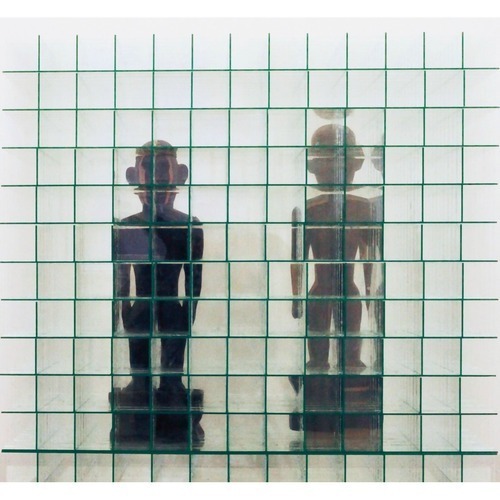
Drawing Room showed works by artists such as Alfredo and Isabel Aquilizan, Kawayan de Guia, Jose Legaspi, Mark Salvatus, and Gaston Damag (above). Damag, whose work entitled “Idol 1,” a bulol fixed within a modern grid, made it to The Art Newspaper’s top picks. This particular piece unveils Damag’s cunning and clever use of ethnographic symbols, calling to mind perhaps his most stunning work yet (which was not at the art fair) — an installation of melting bulols under a red spotlight entitled “Conversion 2.”

Art Informal boldly showed two works in their booth — a diptych by Marina Cruz, and an installation by Pam Yan Santos. Santos’ work entitled “Check What You Can Eat” requires the viewer’s participation — to tick on a sheet of paper which of the lot seems appetizing. The viewer, who sits in front of the painting, is confronted with a table containing an excessive pile of comfort food, that when shoved in one heap may not look so comforting after all.
How important are art fairs? Read on.
#arts & lit#art basel#art basel hong kong#art basel hk#winner jumalon#manila contemporary#silver lens#maria taniguchi#drawing rom#gaston damag#manila informal#pam yan santos
1 note
·
View note
Photo




8 questions for Ian Somerhalder and Nina Dobrev
Ian, what memories did you take from your last trip to the Philippines?
IAN SOMERHALDER: I was in Palawan which is truly one the most beautiful places in the world. I was just greeted by so much environmental beauty, the people were so great to me. The wildlife, the environment, the people, the food, are just incredible. So I took away a lot from my trip to the Philippines. Like, a lot, a lot, a lot. I really wanna go back and spend more time there.
Nina, what did Ian tell you about his trip to the Philippines?
NINA DOBREV: The people were awful. I’m kidding! I saw the pictures he didn’t really need to say much. But he did say a lot. When I saw the pictures, they spoke more than any words could describe. It was so beautiful, I was so jealous I couldn’t be there. It’s such a beautiful place.
Would you guys come back together next time?
NINA: Hopefully, I really want to go and see the Philippines.
IAN: Yeah, I’d love for her to see it.
What made you say yes to do the campaign?
IAN: They’re just incredible people. They’re so giving and generous to their employees and customers.
NINA: He told me about the experience and it was great. It’s just a great brand with great clothes. I’m just excited they asked me to be part of Penshoppe.
What’s your day-to-day sartorial style?
NINA: I’m casual chic.
IAN: I’m a dude. Just jeans and T-shirt. Something comfortable.
How are you guys like in your days off?
IAN: Sleeping. There’s a big amount of energy that goes into the work.
NINA: Our daily lives are very intense. Work is intense, travel is intense. So when it’s not work, we rest.
Where do you see yourself in five years?
IAN: Sleeping a lot more.
NINA: Kind of all over. Hopefully doing a lot of great things.
IAN: Doing great films, the foundation will be bigger.
NINA: Hopefully traveling more. We work 10 months a year and when we travel, we don’t get to stay long. So hopefully, yeah, traveling more.
Any Tagalog words that you have learned?
NINA: What’s crazy in Tagalog?
IAN: Nakakaloka! I love nakakaloka!
Read more
Words by TIM YAP
Photos courtesy of PENSHOPPE
14 notes
·
View notes
Text
7 reasons why it matters to come out of the closet
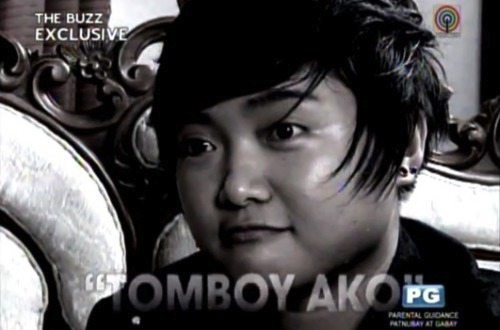
BY GABBIE TATAD
1. It shows that people still value honesty over prejudice. No one likes feeling lied to or being excluded from a thinly veiled secret. There are a lot of ignorant people out there, sure, but there are many who just want to know the truth. In the words of Anderson Cooper, “It’s become clear to me that by remaining silent on certain aspects of my personal life for so long, I have given some the mistaken impression that I am trying to hide something — something that makes me uncomfortable, ashamed or even afraid. This is distressing because it is simply not true… In a perfect world, I don’t think it’s anyone else’s business, but I do think there is value in standing up and being counted.”
2. It opens up a dialogue. It allows us to give our opinions a workout, to hear from those who are uncomfortable with homosexuality, to share what we know to be true, and even to find a place where, while we may not all agree, we may dispel all room for hate and violence.
3. It loosens up the idea of what’s “gay.” We’ve been fed massive amounts of stereotypes, so much so that even some of my gay friends who don’t like fashion/make-up/working out/bright colors feel as though they’re not “gay enough.” In the same manner that not all girls like to get their hair done or wear frothy dresses, having a certain sexual preference doesn’t mean you morph into Carson Kressley overnight.
Yes, there are the expected fashion designers, theater actors, and hairdressers. But there are also basketball fans and soldiers, conservatives and liberals, brothers and friends. The spectrum is wide, and there is no one-size-fits-all type of personality suited to the same sexual preference.
4. It allows us to see people, not preference. I have a gay friend — let’s call him Andrew — who works in the film industry. He recently had a project filming a group of kids, one of whom he treated like his own little brother. During some down time at the shoot, someone on the staff jokingly called Andrew a “faggot.” Andrew dealt with it gracefully enough, but the little boy he was close to overheard the exchange. He asked if Andrew was one of “the happy people.” Andrew said yes, and asked if the little boy would prefer that he stay away. The little boy simply said, “You’re my friend,” and hugged Andrew.
Anderson Cooper, for example, has been speaking to us through our TV sets for years, telling us how bad things were around the world and inspiring ways we could help make it better. To many, he’s someone they can count on to give it to them straight. So although not everyone agrees when it comes to homosexuality, it helps break down the concept when you know, love, and respect someone who happens to be gay. The “gay” part then, quite suddenly, seems secondary.
5. It lowers the margin for shame. Not everyone has to be out before they’re ready. But I feel like a lot of incidents that occur in the darkness — the bad ones, the ones that we hate talking about, the kind that other good gay people have had to answer for and bear such indignation for — happen because there is so much fear. Fear of being judged by loved ones, of one’s own predilections, of being less of a man or woman, of being vulnerable to the ignorance of so many.
This in no way excuses sick behavior (I’m looking at you, Jerry Sandusky), but there are so many things that can be avoided with a proper support system, and it starts with seeing decent people who’ve come out and have managed to build a good life for themselves. Inspiration has a power that isn’t to be underestimated.
6. It sheds more light on the serious problem of bullying. Last February, Rolling Stone published an article on the issue of teen suicides in Anoka, Minnesota. There was one instance mentioned where a 13-year-old lesbian girl committed suicide, and bullies at school were telling her best friend (who is also gay) that she should consider blowing her brains out, too.
People will tell you that kids are kids, and they can’t possibly be sure about who they are at such a young age. When I was 13, I knew I would spend my life writing regardless of whether I did it professionally. I knew I liked boys and music. I knew I hated math. I understood who I was then as much as I do now.
There is a reason why adults are taking a stand, starting things like The Trevor Project. Cruelty can have serious repercussions, and the first step to breaking the culture of discrimination is being able to talk about it.
7. It gives hope to those who need it. It used to be a question of “whites” and “coloreds,” which has since evolved into cultural backgrounds being stereotyped as terrorists, drug mules, what have you. I don’t think we will ever live in a world that is absent of its prejudices; it’s part of what makes us all very human and imperfect.
But to know that it does get better, to have an ally — even if it’s just a face on the nightly news, to know that it is possible to lead a life where your sexual orientation is not your first identifier, is a consolation that many are looking for. It’s not always a matter of pride or rights, but of acceptance; that regardless of how different you are, you are worthy of respect, decency, kindness, and love.
Originally: "7 Lessons from Anderson Cooper (Supreme, July 7, 2012)"
18 notes
·
View notes
Photo



Q&A with Ramon Bautista: He's pogi and he knows it
What is pogi for you?
Pogi is not just a physical appearance. It’s a way of life. A pogi carries confidence, attitude, and best of all, a desire to make the world a better place.
What’s the secret to getting the girl?
Just be the best you can be. If you have to be a different guy, go for it. That’s putting your best foot forward when your other foot has alipunga.
What’s a pogi way to get out of the friendzone?
The only way to get out of the friendzone is to initiate the “Cobra” move. Bigla mong i-kiss yung nang friendzone sayo. Pag kinilig edi panalo, pag hindi, it’s friendship over. Either way, you escape the friendzone.
Read more
Words by CATE DE LEON
Photos by MAU MAURICIO
Produced by DAVID MILAN
Grooming by AU MAURICIO
8 notes
·
View notes
Photo

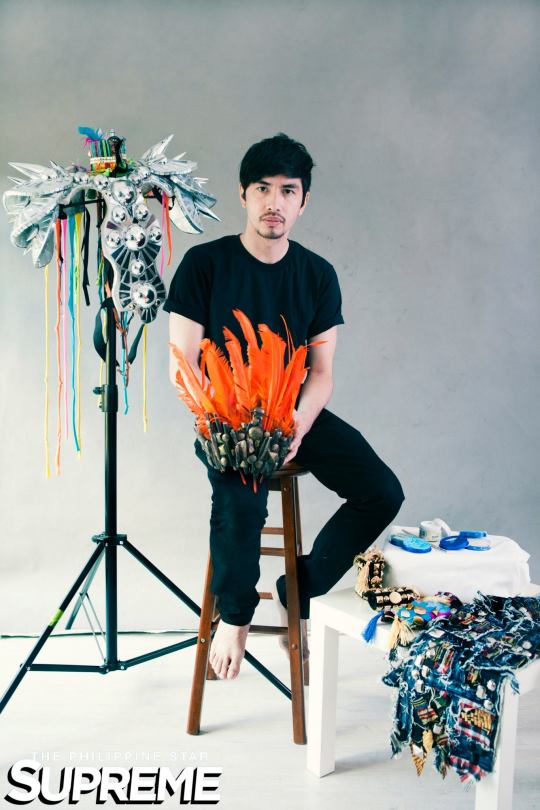
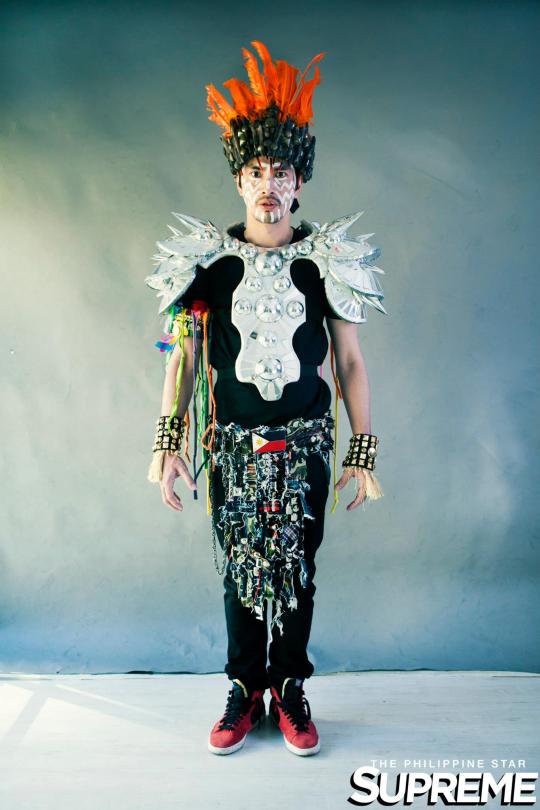
Rico Blanco's altered state
“I knew Fiesto Bandido was going to be fun. But I didn’t know it was going to be that fun,” he shares. “It’s still me. And I think it’s everyone. But the hat, the armor, the bahag, the wristbands, and the tassels — they bring it out. It releases a part of you that you keep suppressed.”
“Galactik Fiestamatik” is, perhaps, one of those things that Rico had suppressed for a long time. Unlike “Your Universe” and all his previous works with Rivermaya, this one’s purely a product of his own effort and wit — no collaborations, not even second opinions. While the first album recruited the likes of genius bassists like Buddy Zabala, Nathan Azarcon, and Louie Talan, along with drummers like Wendell Garcia and Junjun Regalado, “Fiestamatik” was pure Rico Blanco.
“In whatever album, there’s a project. I set my limits. So for this one, I wanted to set a certain range which I won’t go over. And I tried to make it work by using a small range, unlike, say, Liwanag sa Dilim where I start low and go the whole range as the song progresses,” Rico says. “I challenge myself to make a song work without resorting to old habits. Early on, I challenged myself to do things differently. It excited me.”
Read more
Words by DLS PINEDA
Photos by GABBY CANTERO
Produced by PEPE DIOKNO
7 notes
·
View notes
Text
How 'Maynila' was restored

The fully-restored version of Lino Brocka’s "Maynila Sa Mga Kuko Ng Liwanag" was the fourth Filipino film shown at this year’s Cannes Film Festival. We talked to Bono Olgado of the National Film Archives about the circumstances that led to it.
Take us a bit through the restoration. How did it start and how long did it take?
The task of archiving, preservation and restoration has always been difficul. Has it gotten easier? What’s the general outlook?
Four restorations in eight months are pretty damn good. Is it enough? Not nearly. How I wish we could release at least one newly restored film per month. But it’s not about how many or how fast we can churn out restored films. Restoration is dependent on the availability of elements to restore. If you have no salvageable elements, there will be nothing to restore at all. It all starts with preservation. We at FDCP and NFAP take to this task optimistically, but grounded in practical actions and sustainable strategies. There are matters currently being addressed with regard to sustainability. Restoration is an expensive endeavor. The key is to make it a sustainable one. This is where the public comes in. Beyond the resources, expertise, and political will that we are slowly gaining, what we really need more than anything else is the cooperation of our stakeholders and the general public’s support. If we want to see more films restored, then we should go and support these films accordingly. Go and pay for a ticket, buy a DVD. More than discreet government funding and more than the dictates of the private market, public support will shape the direction and economics of preservation and restoration. The archives can neither be built in a day, nor is it built solely by a few. Without a doubt it’s going to be a difficult endeavor, but one we don’t intend giving up on. It’s going to be a very long road ahead; we’re just hoping we’re not going to be alone as we traverse it.
What’s next?
We actually have a number of short films being restored at the moment, including Henry Francia’s On My Way to India Consciousness, I Reached China and a number of Mowelfund films. As for our next feature-length restoration, we are researching but would definitely love to hear from the public what film they would like to see again in its full cinematic glory.
Read more
Words by DODO DAYAO
#film & tv#maynila sa mga kuko ng liwanag#fdcp#nfap#bono olgado#lino brocka#film archiving#film archive#film restoration
14 notes
·
View notes
Text
Q&A with David Guerrero, publisher of Manila Envelope
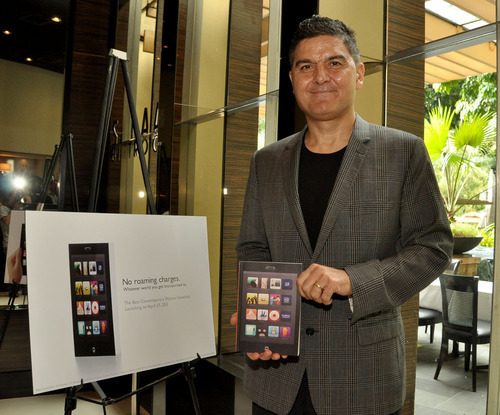
What was the original intention when you first released Manila Envelope?
Originally, it was just to explain something about the country to people who haven’t been here so the first one we made specifically to be distributed at the Cannes Lions International Festival of Creativity. It was something that was brought there to give other people from around the world some background about the Philippines because a lot of people didn’t know much. Now, I think the situation’s different, now people know a little bit more but maybe they don’t know too much about the writing. Now, the intention is not really so much for that one narrow audience but more of a general audience; perhaps trying to appeal more to the literary types in various parts of the world.
Why decide on sampling Filipino novelists for the fourth issue?
It felt like an important thing to do, to collect some of these modern storytellers together in one place. It feels like it helps with the understanding and definition of the culture. I think it’s quite a satisfying collection to put together. It feels it could be quite a useful guide and there are other compilations that have come before and that will come afterwards but it’s just the particular focus that we thought was needed.
In Manila Envelope 4, many of the writers are based overseas. What do you think does this say about our literary scene?
It’s interesting. They do say it’s very hard to earn a living as a novelist. I had the privilege (of meeting) F. Sionil Jose sometime back and he said very, very few people can make a living in writing. So perhaps it’s a common trait for some of them, (they) need to go abroad, to find a place where they can write or support themselves by their writing whether it’s with an academic position or some kind of related work that they can do. It seems to be quite hard here so that’s one thing. And perhaps there is a sense in which people who write do take an external validation seriously, someone like Miguel Syjuco who won the Man Asia Literary Prize, it has instantly gained some recognition (for his work). As a nation of readers, people do look to see how some of our authors have been received overseas as well. But that’s something that could change in the future.
What do you think is the difference between the classic Filipino novels and the contemporary ones?
I think with both Jessica (Hagedorn) and Chuck Syjuco, you can see the influence of the exile, or the expat novelists. I’ve read Zack Linmark’s book and lots of others and quite a few of the published novelists do seem to talk a lot about that exile experience, especially in the US. So that seems to be a new dimension to the work that hasn’t been there before. I think that’s a reflection of how being Filipino doesn’t necessarily mean being based in the Philippines anymore and I think there’s a substantial overseas culture and it’s coming through very strongly. I’m sure people will read this and think “Why aren’t there more locally based authors?” And that probably comes back to the same issue of people not being able to support themselves while they do it.
Read more
Words by DON JAUCIAN
Image via INTERAKSYON
4 notes
·
View notes
Photo
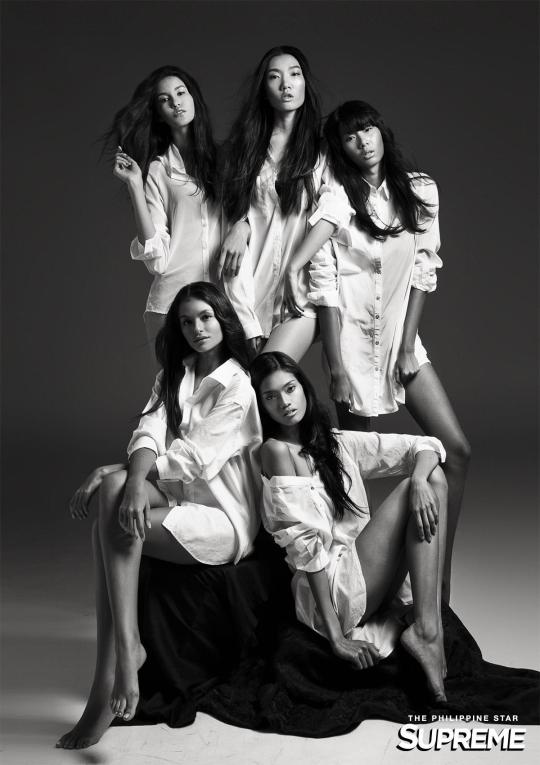

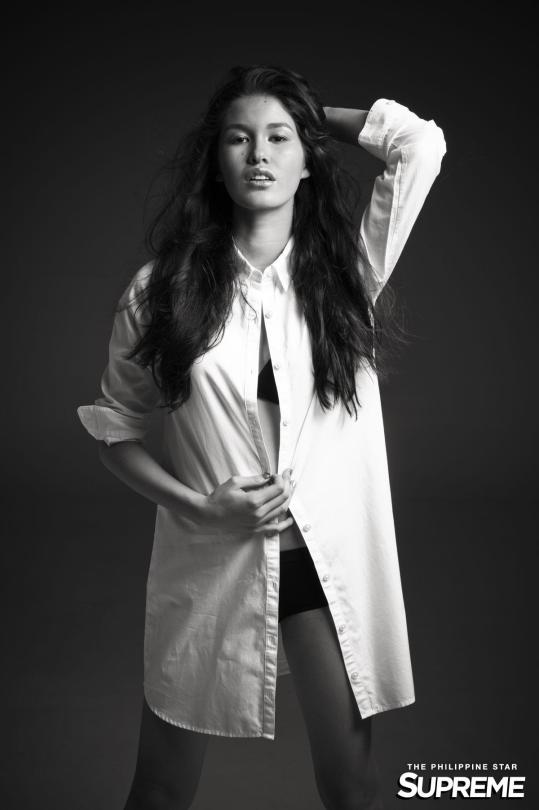


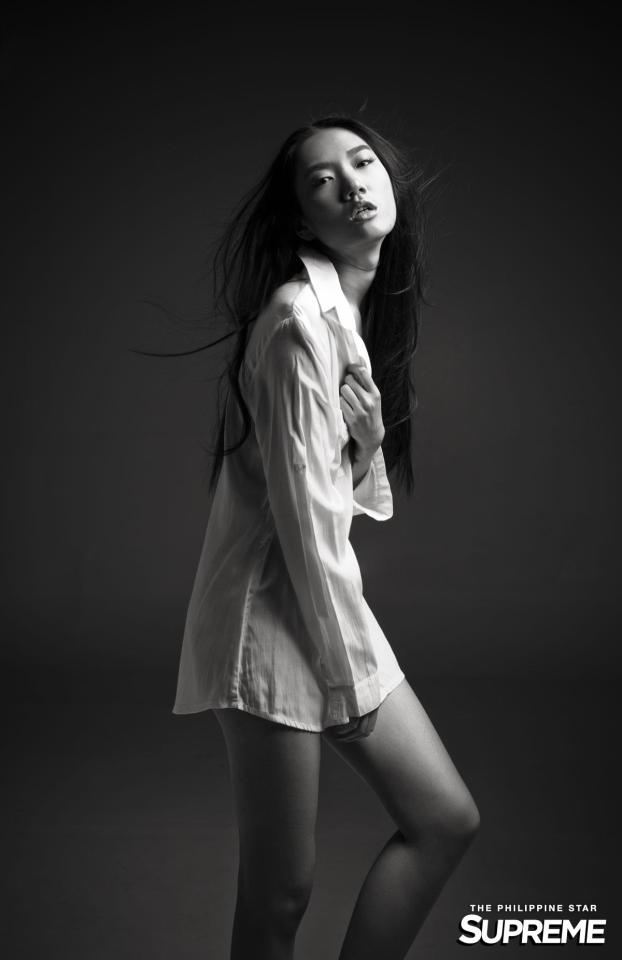
The new supermodels: Danica Magpantay, Pauline Prieto, Val Weigmann, Sam Gomez, Jessica Yang
Enter the new brand ambassadors, representing the most diverse list of front runners. Danica Magpantay has a title under her belt, Supermodel of the world, the first Filipina to have achieved the honor. She currently is most in demand in global runways and regional campaigns. She has a distinct glint that glows onstage, a glow that makes her a cut above the rest.
Pauline Prieto is the designer’s muse, her chameleon gaze turns every glossy she touches into gold. She currently shuffles between Hong Kong and Manila for choice assignments. Val Weigmann transitioned from glitz biz to runway and is currently the toast of TVC’s land, with a plum role in a toothpaste commercial aired all over the region.
Sam Gomez was discovered at the age of 13 and is the youngest winner of the Supermodel Philippines title. She is the favorite of designers and directors for her model maturity at such a tender age. Jessica Yang is from Taiwan but fell in love with the Philippines. The fashion industry fell in love with her Far Eastern feline features.
Read more
Words by TIM YAP
Photos by BJ PASCUAL
Produced by DAVID MILAN
Makeup by ANGELIQUE DINGLASAN
and SHARON SOLEDAD of Shu Uemura
Hair by JIM GUERRERO of L'Oreal Proffessionel
24 notes
·
View notes
Photo

Return of the Juday: Q&A with Judy Ann Santos
Your characters are mostly underdogs. Why do you think Filipino audiences are so attracted to underdogs?
I don’t know. Filipinos, I guess, connected to those who are most pitiable. People can relate to characters who are oppressed because we live in a country where most people are poor, and these people experience a lot of problems. Teleseryes reflect realities in the masses’ lives, or in the lives of people they know.
You’ve been acting since you were eight. Growing up in front of the cameras, portraying different roles, was there ever a point you had to stop and say, “Who am I really?”
There was one time I reached that point because I was doing four projects at the same time — "Gimik," "Judy Ann Drama Special" and two more movies — I’d come on set not knowing who I was and what character I was supposed to play because I didn’t have sleep and I’d be so tired. This was before, during the time of pito-pito, when tapings would last until nine in the morning. Literally, after packing up on one set, I’d go to the next one.
It never, though, came to a point where I bring my characters home. There are times I’d bring home the emotion, but not the character. I don’t take my roles to heart. This is all a job.
Did you know, at eight years old, that this is what you wanted to do?
No. At eight, I was just enjoying the atmosphere. The main reason I wanted to go to tapings was that I’d have father figures on set — the cameramen, light men, utility men. I’d sleep on their laps. I grew up full of love from the crew. I think it was only when ABS-CBN gave me a drama special that I realized that this is what I want. In the show, I’d portray different characters every week. It was an assurance that the network believed in my work. That’s when I realized that maybe I’m good at this.
Read more
Words by PEPE DIOKNO
Photo by RAYMUND ISAAC
Styled by PAM QUINONES
Makeup by JUAN SARTE
Sittings by DAVID MILAN
5 notes
·
View notes